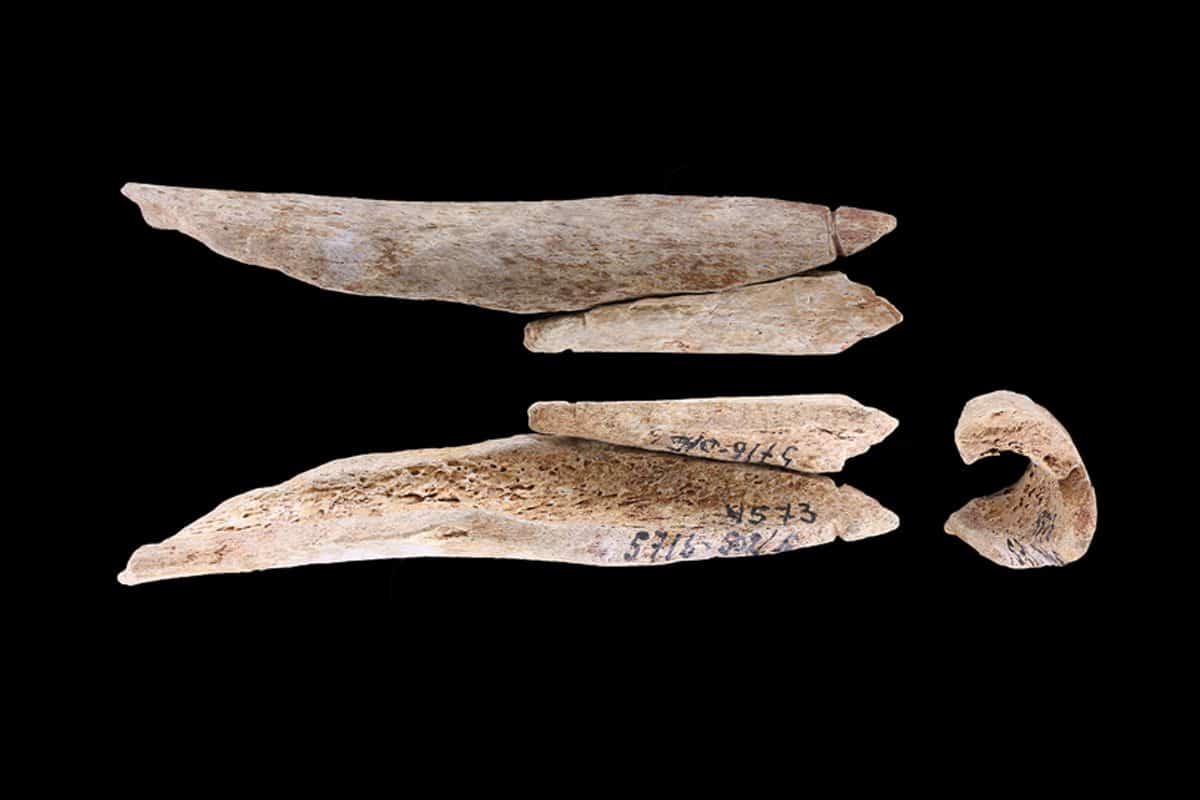A study on prehistoric bone jewellery has revealed that they were carved from human remains.
The jewellery was first discovered in the 1930’s on the island of Yuzhniy Oleniy Ostrov on Lake Onega, Russia. Excavations at the time found 177 burials which contained a concentration of animal tooth pendants and miniature sculptures, depicting the Eurasian elk, the beaver and the brown bear.
The “Animals Make Identities” research project at the University of Helsinki has been investigating the meaning of animals in Stone Age cultures based on the funerary goods buried in prehistoric graves.
As part of the study published in the Journal of Archaeological Science, samples of the bone pendants were sent to the BioArCh research facility at the University of York to conduct a mass spectrometry (ZooMS) analysis. The technique identifies species from peptides, or amino acids, extracted from proteins contained in extremely small samples of bone.
The results revealed that 12 out of 37 samples were human, whilst the remainder were primarily from the bones of elks and a bovine animal.
The human bone pendants are flakes of broken long bones of varying sizes, with one or two grooves cut into them. They come from three graves, one of which contained two deceased individuals that were mainly in the same context with tooth pendants and animal bone pendants.
From ethnographic connections, the use of human bones as a raw material for objects is known in parts of Asia and South America, where attempts were often made to debase body parts of enemies by working them into objects. At the same time, the body parts of family members were worn out of respect or attachment, for example, after processing them into pendants.
Usually, the use of human bone as a raw material is associated with cannibalism, as there are often traces of meat removal on the bones. However, the scarcity of incontrovertible evidence makes it difficult to verify cannibalism based on archaeological finds.
Associate Professor Kristiina Mannermaa said: “The surface of the bone pendants we investigated is so worn out that you cannot make out any potential cut marks, which means we have no reason to suspect cannibalism on the basis of the discoveries in Yuzhniy Oleniy Ostrov.”
“The fact that the use of human bones was not emphasised in any way and that the objects are indistinguishable and similar to objects made of animal bones may indicate the intertwining of animals and humans in the Stone Age worldview,” Mannermaa says. “Using animal and human bones together in the same ornament or clothing may have symbolised the ability of humans to transform into animals in their minds, in addition to which they believed that animals could take human form. We know that such blurring of forms and boundaries has been and still is part of the worldview of indigenous peoples.”
https://doi.org/10.1016/j.jasrep.2022.103488
Header Image Credit : Anna Malyutina





